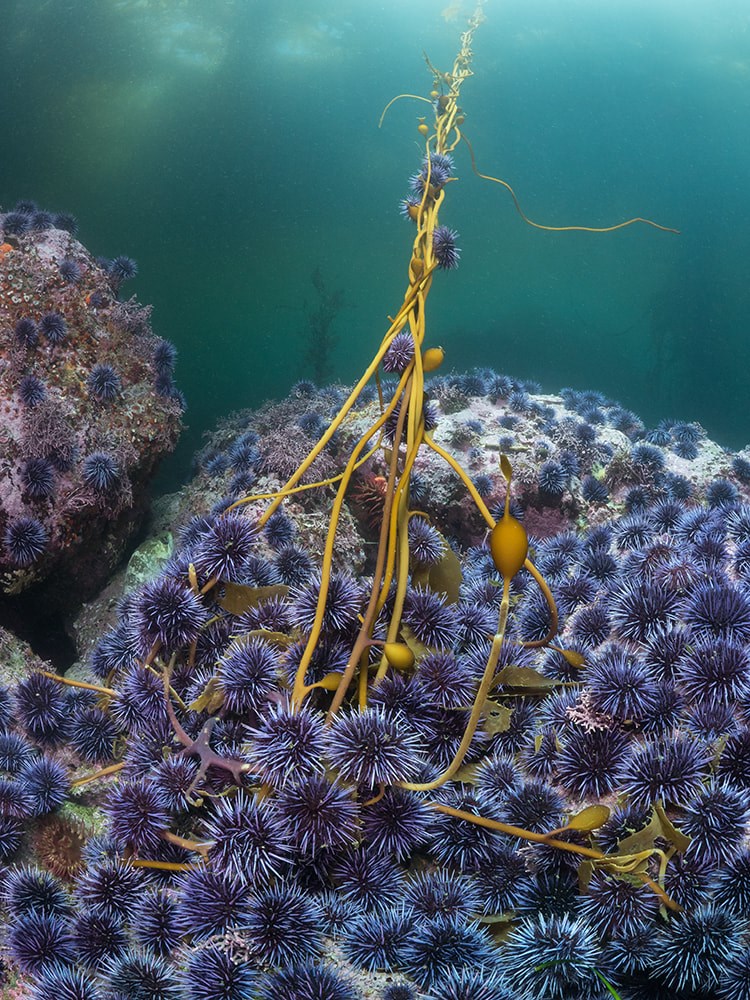2014 was the start of an ecological upheaval on the California and Oregon coasts. It started with the collapse of the sunflower sea star due to sea star wasting disease and by the summer, a large “blob” of warm water stretched from Alaska to Baja. In Monterey Bay, researchers documented a large decline in kelp and corresponding spread of purple sea urchin barrens – even in areas with sea otters. To the surprise of many marine biologists, it appeared at first glance, that sea otters were not controlling purple sea urchins – a result that diverged from the previous 40 years of sea otter science.

It makes sense that sea otter don’t eat empty sea urchins (urchins found in” urchins barrens” often contain no uni since they have eaten most of the kelp and run out of food). A recent paper by Josh Smith shows that sea otters responded to the dramatic increase in urchins by consuming over 3 times as many urchins than before 2015. Otters indirectly maintained remnants of kelp forests amid widespread sea urchin outbreaks by preferentially targeting energetically profitable (gonad rich) sea urchins in or near kelp forests. These forest patches maintained by sea otters are the spore sources to ultimately replenish the barren grounds. Learn more…
